 Why do people want to ban books?
Why do people want to ban books?
In an era of instantaneous fact, images and videos, it seems odd that some people still ban books today. A teen can flip on the TV and watch extreme violence and hear obscene profanity during prime time. In a few keystrokes, they can watch porn and they can explore extreme points of view about any religion, the LGBTQ community, and people of color. So why ban books that contain contents that are much more tame than you could find on the internet? Hmm. Because it’s old school.
Time Magazine just published a comparison between 10 most banned books in 2001 and 2015. Many of these books were banned at times when religious groups were fueling propaganda with political fear-mongering in the news. The main difference between the 2 time periods is that in 2001, books were banned because of sexual content, strong language, and drugs. In 2015, the focus was more on sexual orientation (transgender, homosexuality) and religion (atheism, Islam).
One thing for sure: If you ban a book from the public, you’re going to increase interest in reading it. Banning books is great for book sales. Here is the American Library Association’s list of most-challenged books of 2001 and 2015.
Most-challenged books of 2001:
- Harry Potter, by J.K. Rowling
Reasons: anti-family, occult/Satanism, religious viewpoint, violence - Of Mice and Men, by John Steinbeck
Reasons: offensive language, racism, unsuited to age group, violence - The Chocolate War, by Robert Cormier
Reasons: offensive language, sexually explicit, unsuited to age group, violence - I Know Why the Caged Bird Sings, by Maya Angelou
Reasons: offensive language, sexually explicit - Summer of My German Soldier, by Bette Greene
Reasons: offensive language, racism, sexually explicit - The Catcher in the Rye, by J.D. Salinger
Reasons: offensive language, unsuited to age group - Alice (series), by Phyllis Reynolds Naylor
Reasons: sexually explicit, unsuited to age group - Go Ask Alice, by Anonymous
Reasons: drugs, offensive language, sexually explicit - Fallen Angels, by Walter Dean Myers
Reason: offensive language - Blood and Chocolate, by Annette Curtis Klause
Reasons: sexually explicit, unsuited to age group
Most-challenged books of 2015:
- Looking for Alaska, by John Green
Reasons: Offensive language, sexually explicit, and unsuited for age group. - Fifty Shades of Grey, by E. L. James
Reasons: Sexually explicit, unsuited to age group, and other (“poorly written,” “concerns that a group of teenagers will want to try it”). - I Am Jazz, by Jessica Herthel and Jazz Jennings
Reasons: Inaccurate, homosexuality, sex education, religious viewpoint, and unsuited for age group. - Beyond Magenta: Transgender Teens Speak Out, by Susan Kuklin
Reasons: Anti-family, offensive language, homosexuality, sex education, political viewpoint, religious viewpoint, unsuited for age group, and other (“wants to remove from collection to ward off complaints”). - The Curious Incident of the Dog in the Night-Time, by Mark Haddon
Reasons: Offensive language, religious viewpoint, unsuited for age group, and other (“profanity and atheism”). - The Holy Bible
Reasons: Religious viewpoint. - Fun Home, by Alison Bechdel
Reasons: Violence and other (“graphic images”). - Habibi, by Craig Thompson
Reasons: Nudity, sexually explicit, and unsuited for age group. - Nasreen’s Secret School: A True Story from Afghanistan, by Jeanette Winter
Reasons: Religious viewpoint, unsuited to age group, and violence. - Two Boys Kissing, by David Levithan
Reasons: Homosexuality and other (“condones public displays of affection”).
Read the Times Magazine story here.



 Living in the Monterey Bay, just south of Silicon Valley and San Francisco, is arguably one of the best places to live on earth – as long as you don’t consider the ridiculous cost of housing. I love having gorgeous views and being just minutes from the beaches and redwood forests. But my husband Rob and I can afford to live in a huge house simply because we bought before the housing market skyrocketed. For my kids today, it’s almost impossible to get into the housing market in our area.
Living in the Monterey Bay, just south of Silicon Valley and San Francisco, is arguably one of the best places to live on earth – as long as you don’t consider the ridiculous cost of housing. I love having gorgeous views and being just minutes from the beaches and redwood forests. But my husband Rob and I can afford to live in a huge house simply because we bought before the housing market skyrocketed. For my kids today, it’s almost impossible to get into the housing market in our area.
 What kind of people (or companies) prey on college students? Despicable people.
What kind of people (or companies) prey on college students? Despicable people.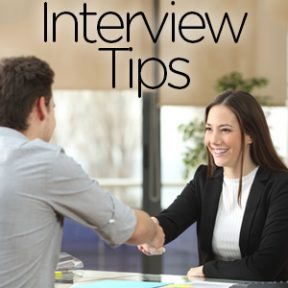
 Whether you’re preparing for a college admissions or job interview, your interviewer or the entire committee will judge you from your initial contact. What does this mean? Your introductory cover letter that accompanies your CV or resume – YES, ALWAYS INCLUDE A WELL-WRITTEN COVER LETTER – can entice the readers and highlight your skills and accomplishments in ways that might be missed without one. So don’t shoot quick texts or emails while setting up the interview. Keep it professional with a positive spin.
Whether you’re preparing for a college admissions or job interview, your interviewer or the entire committee will judge you from your initial contact. What does this mean? Your introductory cover letter that accompanies your CV or resume – YES, ALWAYS INCLUDE A WELL-WRITTEN COVER LETTER – can entice the readers and highlight your skills and accomplishments in ways that might be missed without one. So don’t shoot quick texts or emails while setting up the interview. Keep it professional with a positive spin. 
 I find it disheartening to hear students tell me that they hate school or that their classes are boring. It seems that education in America has moved away from teaching content with teachers who have a passion for the subjects that they teach. When excellent teachers are forced to teach a prescribed volume of concepts from pre-approved textbooks within very specific parameters, these excellent teachers often become disenchanted as they go through the motions to deliver the material. I’m
I find it disheartening to hear students tell me that they hate school or that their classes are boring. It seems that education in America has moved away from teaching content with teachers who have a passion for the subjects that they teach. When excellent teachers are forced to teach a prescribed volume of concepts from pre-approved textbooks within very specific parameters, these excellent teachers often become disenchanted as they go through the motions to deliver the material. I’m 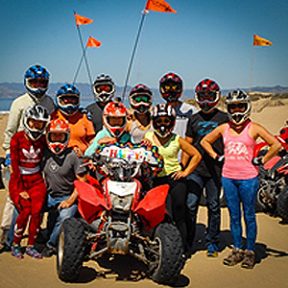
 Birthdays are about being together. It’s not about parties or gifts – it’s getting off the treadmill and doing fun things that they normally don’t have time to do. I turned 60 last weekend and planned a family getaway in Pismo. After watching the girls plan Rob’s Surprise 60th birthday party last year, I knew I had to come up with a plan before they started making plans for a similar-type celebration for me. Hint: I don’t like surprise parties!
Birthdays are about being together. It’s not about parties or gifts – it’s getting off the treadmill and doing fun things that they normally don’t have time to do. I turned 60 last weekend and planned a family getaway in Pismo. After watching the girls plan Rob’s Surprise 60th birthday party last year, I knew I had to come up with a plan before they started making plans for a similar-type celebration for me. Hint: I don’t like surprise parties! 

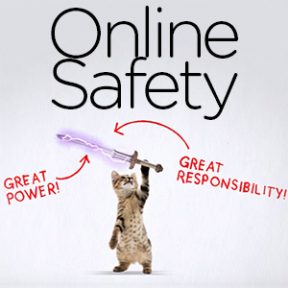
 I write a lot about
I write a lot about 
 Is antibiotic resistance really going to be the next biggest health epidemic? We’ve used antibiotics as the 20th Century “cure-all” for everything from most human ailments to animal husbandry. Even when we were told that antibiotics didn’t cure the common cold, we still demanded them from our doctors. Did you know that animals raised for human consumption are routinely fed antibiotics? So what’s the problem with using this miracle drug? Our bodies have become resistant to them so we need more powerful antibiotics to do the same job that the antibiotics of yesteryear could do.
Is antibiotic resistance really going to be the next biggest health epidemic? We’ve used antibiotics as the 20th Century “cure-all” for everything from most human ailments to animal husbandry. Even when we were told that antibiotics didn’t cure the common cold, we still demanded them from our doctors. Did you know that animals raised for human consumption are routinely fed antibiotics? So what’s the problem with using this miracle drug? Our bodies have become resistant to them so we need more powerful antibiotics to do the same job that the antibiotics of yesteryear could do. 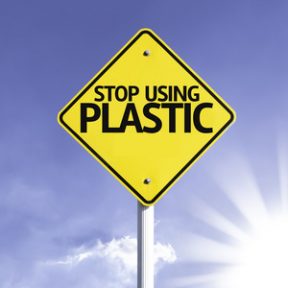
 Living in Santa Cruz for the past 42 years makes me a target of stereotypes like “hippy” and “environmentalist.” I don’t consider myself a “hippy” but I am a die-hard environmentalist. I served on the board of directors of the first Ecology Action of Santa Cruz back in the early ‘80’s and I compost. Today, most people recycle paper, cardboard, glass bottles, and aluminum cans but everyone still seems confused about what to do with PLASTIC.
Living in Santa Cruz for the past 42 years makes me a target of stereotypes like “hippy” and “environmentalist.” I don’t consider myself a “hippy” but I am a die-hard environmentalist. I served on the board of directors of the first Ecology Action of Santa Cruz back in the early ‘80’s and I compost. Today, most people recycle paper, cardboard, glass bottles, and aluminum cans but everyone still seems confused about what to do with PLASTIC.  Storage containers:
Storage containers: Serving plates:
Serving plates: Trash liners:
Trash liners: Homemade lunches:
Homemade lunches: Glass or stainless steel water bottles:
Glass or stainless steel water bottles: Eating Utensils:
Eating Utensils: Cloth bags:
Cloth bags: Cloth diapers:
Cloth diapers: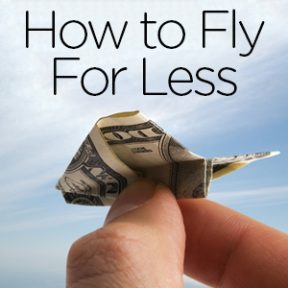
 Now that airlines – like Amazon and other retailers – are using customer profiling (stalking your every move) to determine how you spend your money and where you want to travel, you’ll notice that airfares are all over the board. No longer can you depend on predictable discounts because airlines have become tech savvy, and they’re using your information to determine how they’ll hook you into buying airfares at a higher rate. The airlines cater to their business and first class fliers because they’re loyal and they pay the highest rates.
Now that airlines – like Amazon and other retailers – are using customer profiling (stalking your every move) to determine how you spend your money and where you want to travel, you’ll notice that airfares are all over the board. No longer can you depend on predictable discounts because airlines have become tech savvy, and they’re using your information to determine how they’ll hook you into buying airfares at a higher rate. The airlines cater to their business and first class fliers because they’re loyal and they pay the highest rates.